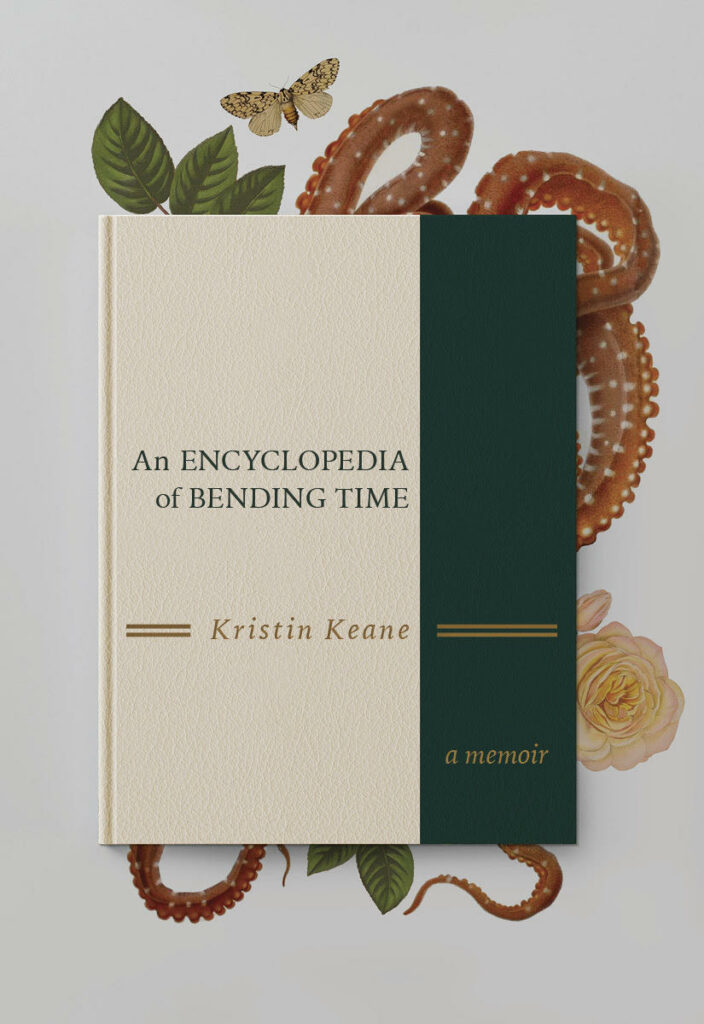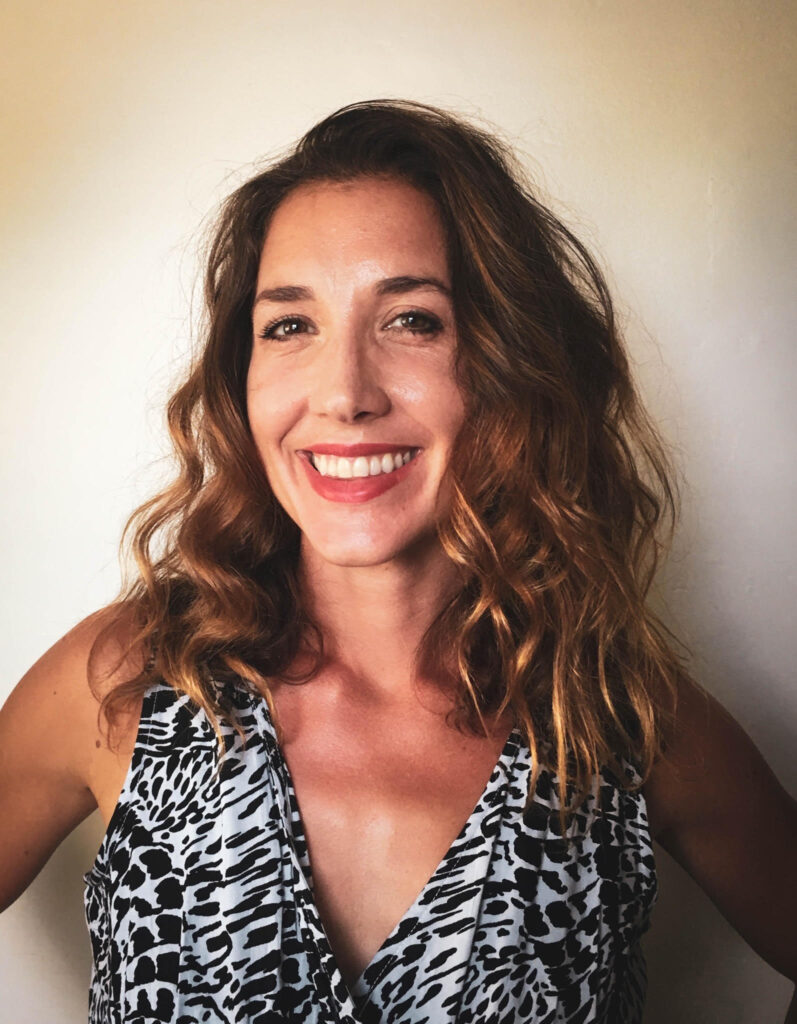Review by Aurora D. Bonner
 “I am attempting to contain you—to contain us, and give form to the nebulous and distorting experience of losing a mother.”
“I am attempting to contain you—to contain us, and give form to the nebulous and distorting experience of losing a mother.”
In An Encyclopedia of Bending Time (Barrelhouse, April 2022), Kristin Keane pushes the boundaries of craft as she wrestles with the passing of her mother and implores the unanswerable question of how to hold onto what is no longer physically there.
In a striking craft choice, An Encyclopedia of Bending Time is written as a hermit crab memoir with alphabetized entries—much like that of an actual encyclopedia complete with “See alsos” at the end of each entry. Each entry is written as a vignette that seamlessly weaves complex threads of love, grief, identity, and time. As Keane says herself,
This is a story that is told in reverse, about reversal, about making, about un-making. It starts at one kind of ending, then moves backwards. This story is a corpus, held together by strings of love, by themes, by memories. Surely it is missing parts.
Masterfully organized and calculated with linked passages and reoccurring themes, the narration is stream of consciousness as her mind races in a desperate attempt to make sense of “the missing.” She continues:
No—this is not in reverse, it is flipped upside down. The beginning of this story was told in order, now it is focused on the experience of time in life without you: you were here on a Friday when you went to the hospital. You were here the following week when we took you home. By Monday, you were gone.
By using second person narration, Keane allows the reader an intimate look at her relationship with her mother and we witness the aching and confusion of loss firsthand. She goes on to say:
The order of events matters less now than the feeling of them: a Then Time memory emerging after a Between Time.
I’m sorry if the way I’m constructing this story causes you to lose your bearings, I’m just not sure actually, where things end or begin.
The use of second-person narration also pairs well with the stream of consciousness to create an extremely raw and moving replica of her grief path as she wrestles with “how to make sense of heartbreak.”
“Where did you go?”
One of the themes that emerges is her struggle to understand time and what reality is now that her mother has “disappeared.” Keane explores quantum theories and studies of the mind to implore this question. Desperate to make sense of what has happened, she is aware of an unravelling, an “upsidedownness” that confuses her entire sense of being.
“Who am I?”
Interwoven is the loss of identity with the loss of a loved one. This follows her through multiple threads in unique and clever ways. For instance, when her identity is stolen soon after her mother passes, she begins to invent an imaginary character—the Mystery Kristin Keane. She imagines conversations with this alter-ego, even asking for her advice at times.
“Am I still me?”
Finally, Keane brings to light an important perspective on grieving. In the entry, KÜBLER–ROSS, ELIZABETH (1926-2004), Keane discusses the author’s text On Death and Dying and argues that although “the five-stage model maintains consistent ubiquity in popular culture,” the grieving of those left behind is much less linear.
The act of dying is not the same as the act of grieving a loved one’s death however, and this kind of rigid framework can stigmatize grieving which doesn’t adhere to these fixed enactments.
Keane shows grief is not linear.
“There is pain afterwards, and then there is living with it—an enterprise as unique as fingerprints.”
“What should I do?”
An Encyclopedia of Bending Time is a beautiful and heartbreaking story of love and sorrow, of not getting better, of endings and beginnings, and of the unbreakable relationship between a mother and daughter. Keane’s touching and inventive memoir is a deep and resonating read.
 Aurora Bonner is an environmentally-inspired writer and teacher. Her work has been published through national and regional publications, including Under the Gum Tree, the Colorado Review, Assay, Brevity, Hippocampus Magazine, and in the anthology Dine published by Books by Hippocampus. She holds an MFA in Creative Writing from Wilkes University.
Aurora Bonner is an environmentally-inspired writer and teacher. Her work has been published through national and regional publications, including Under the Gum Tree, the Colorado Review, Assay, Brevity, Hippocampus Magazine, and in the anthology Dine published by Books by Hippocampus. She holds an MFA in Creative Writing from Wilkes University.

